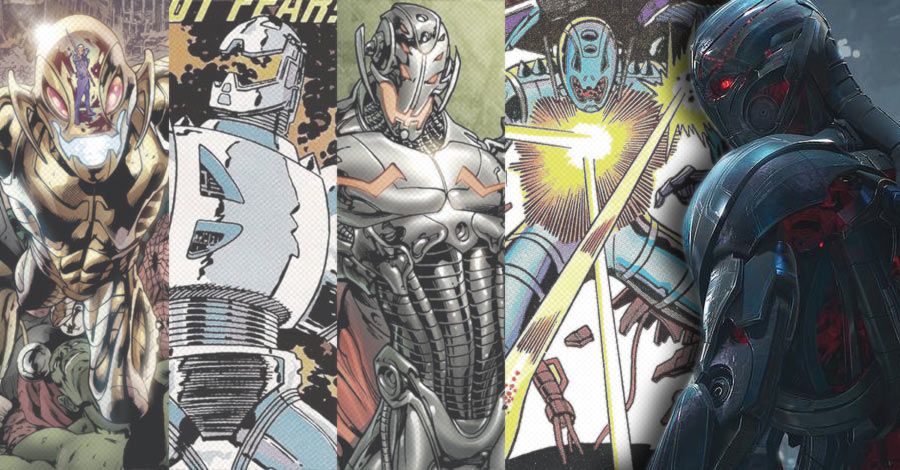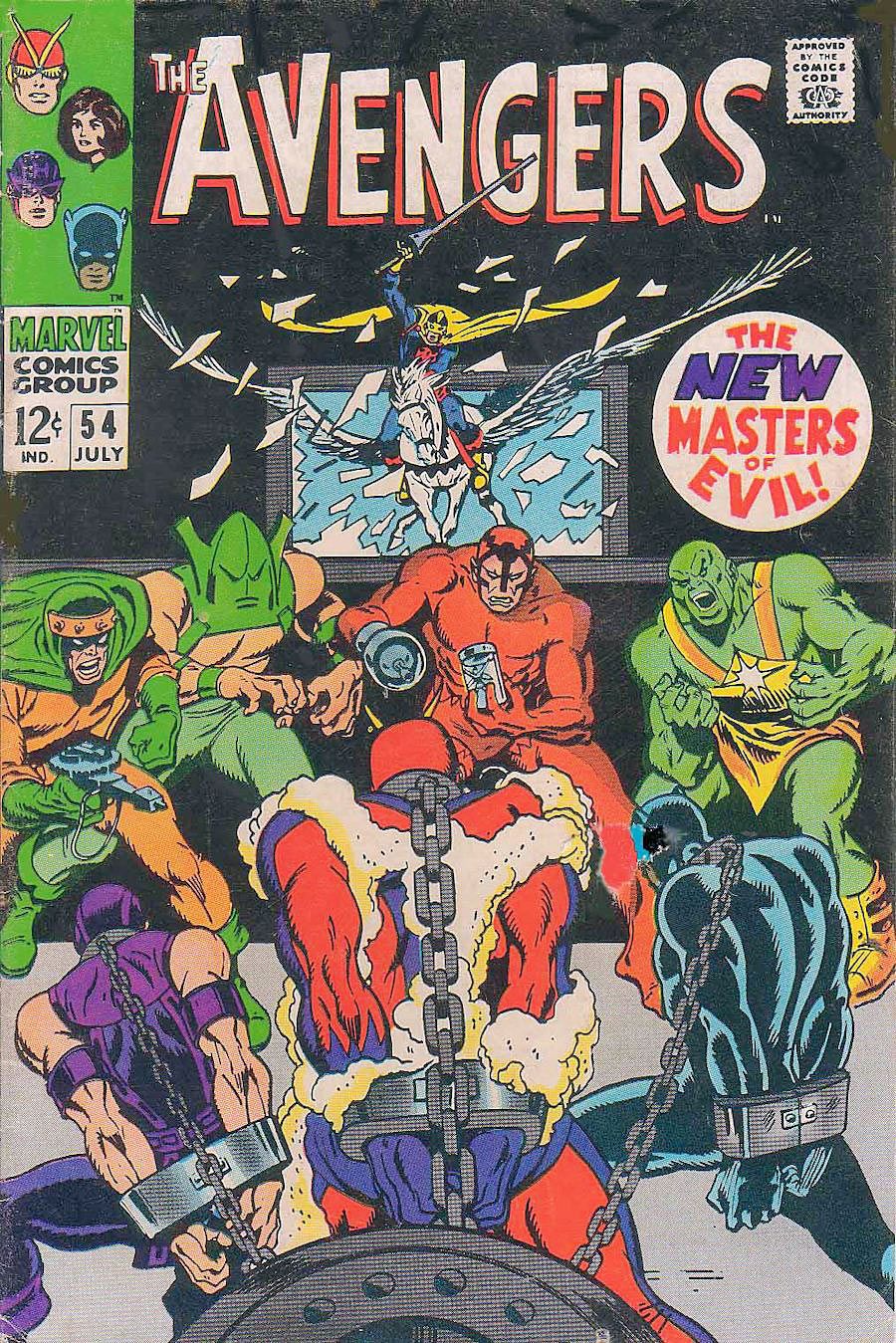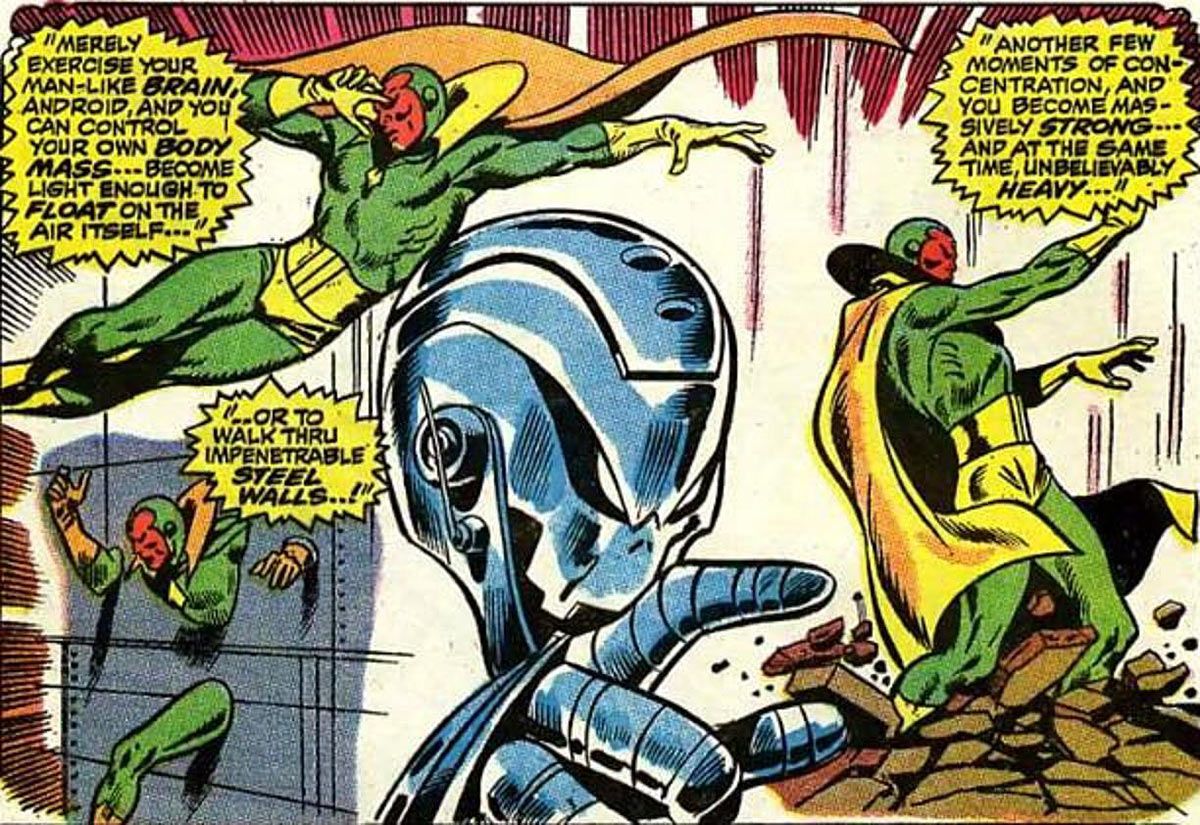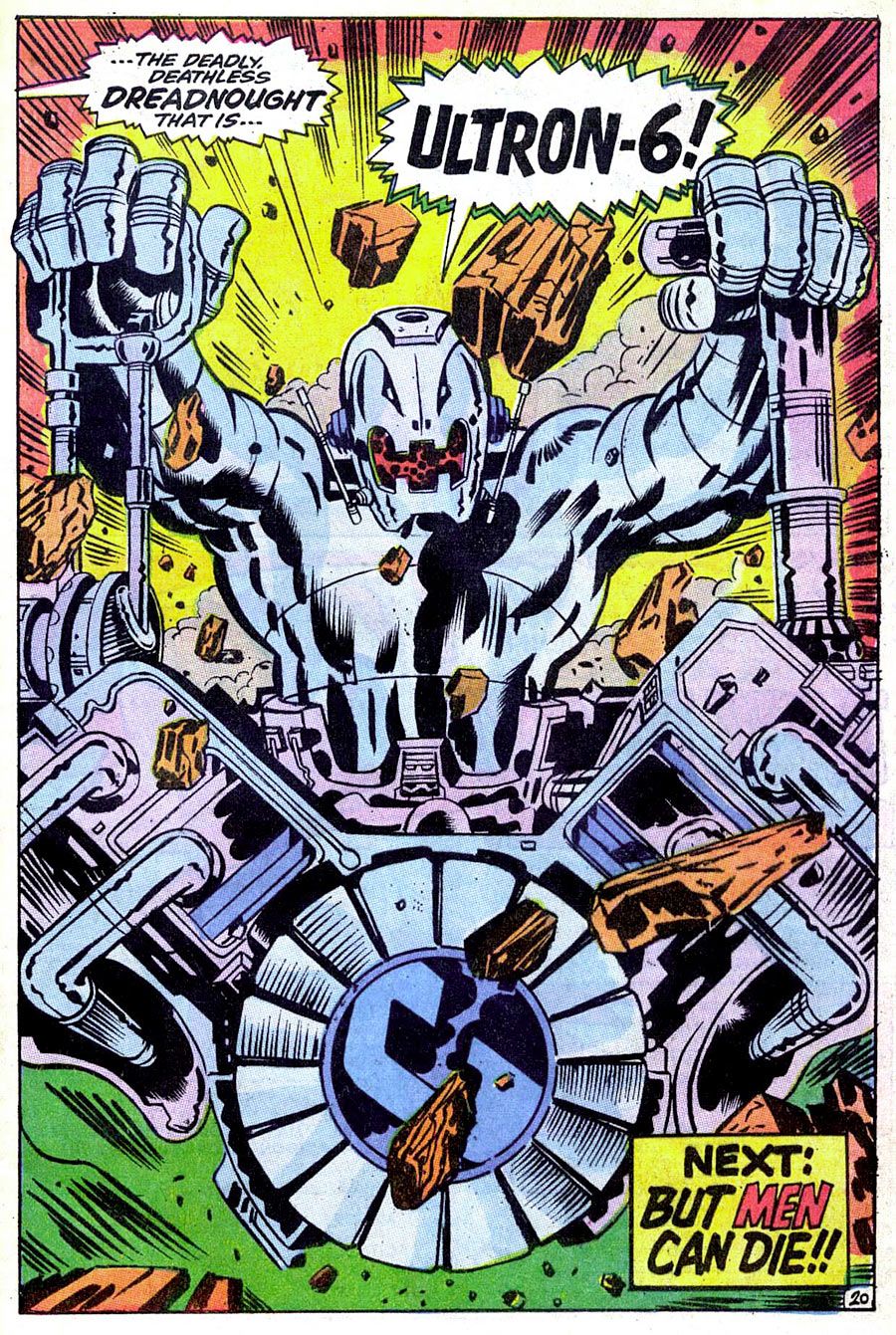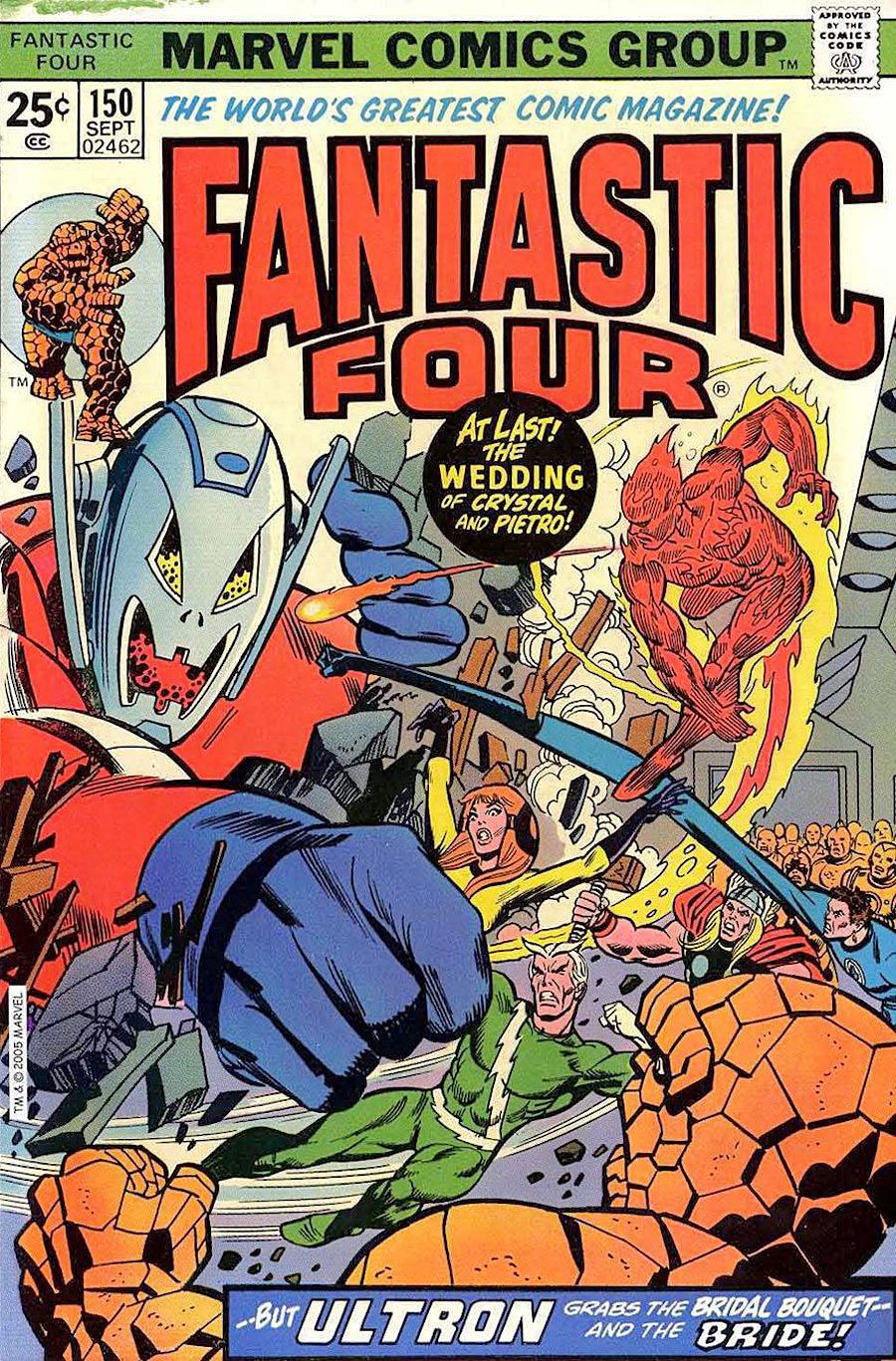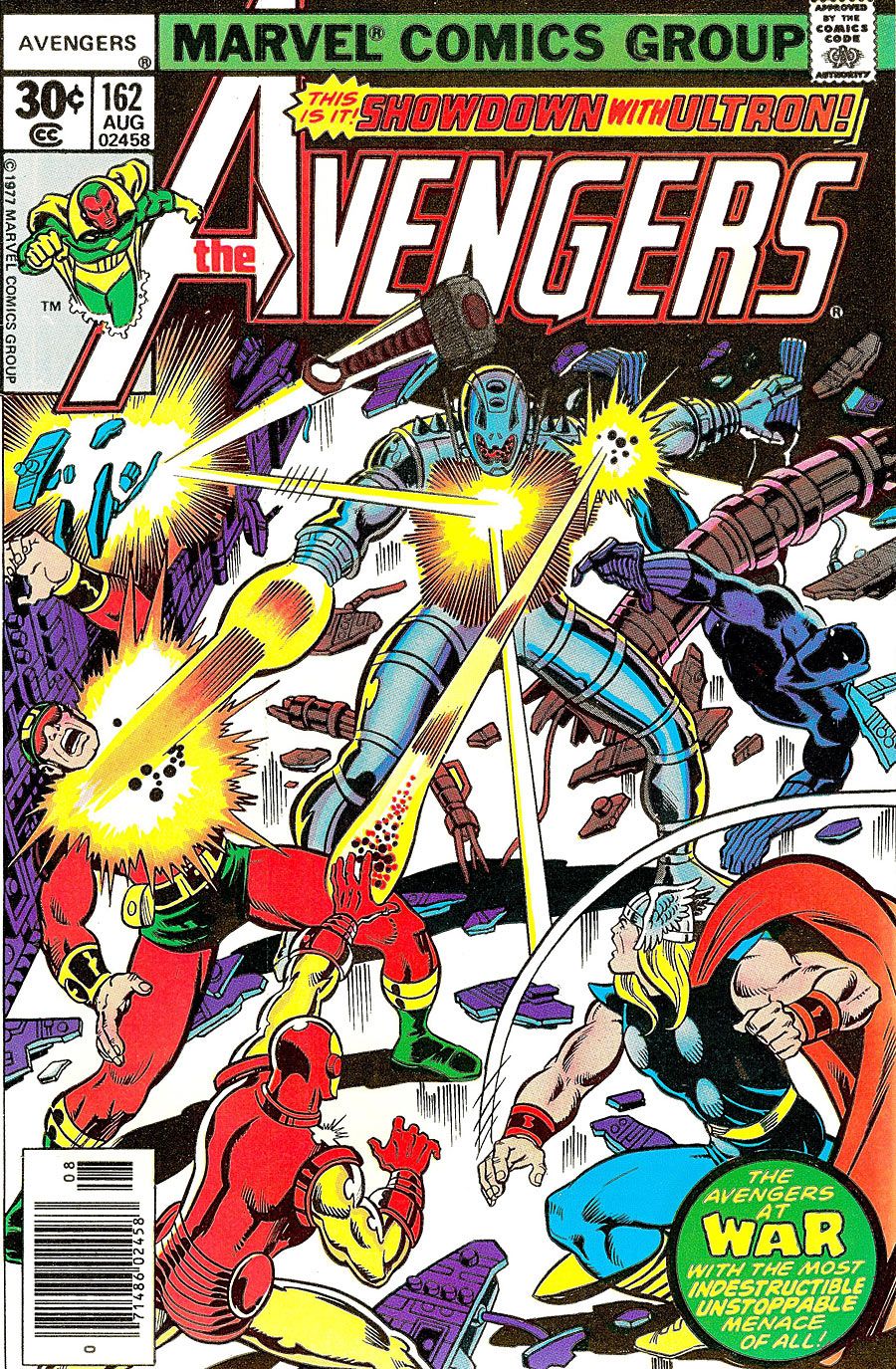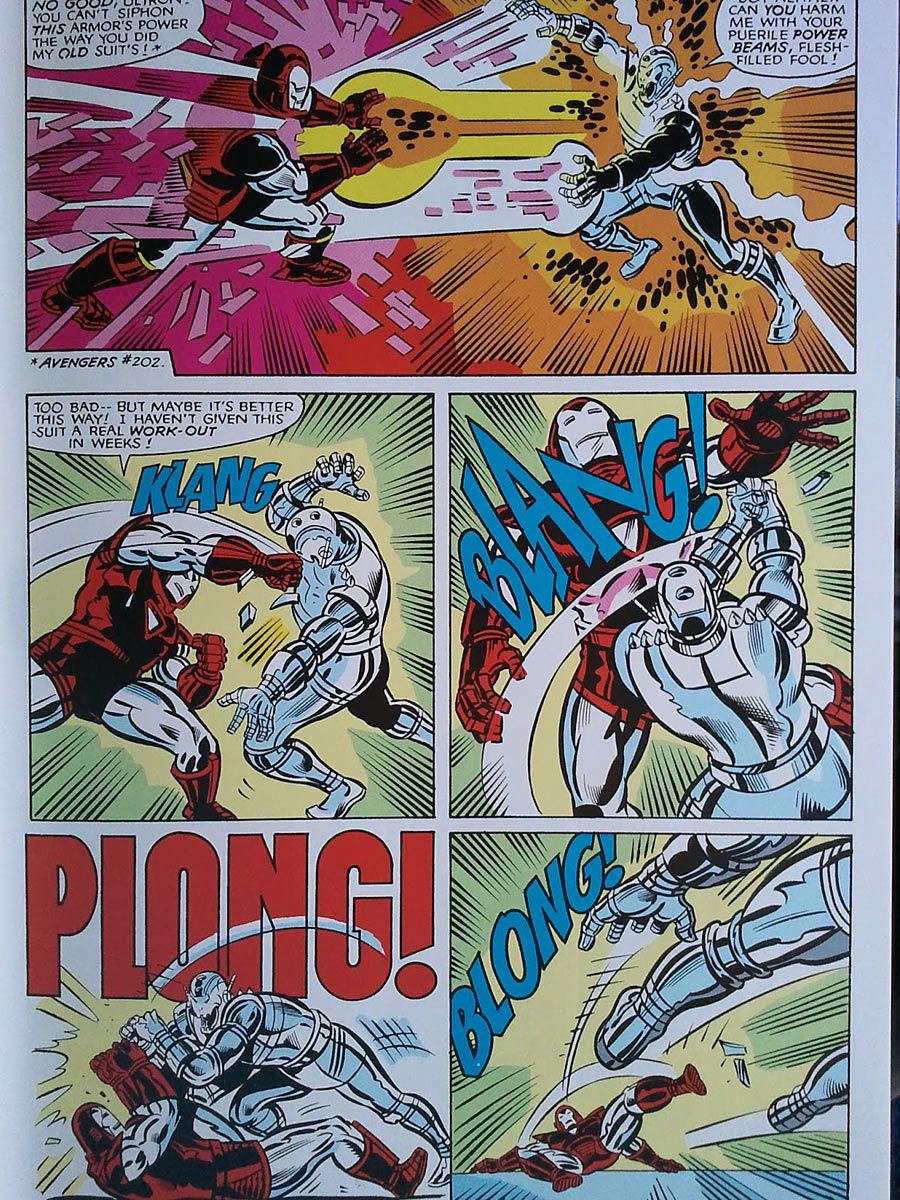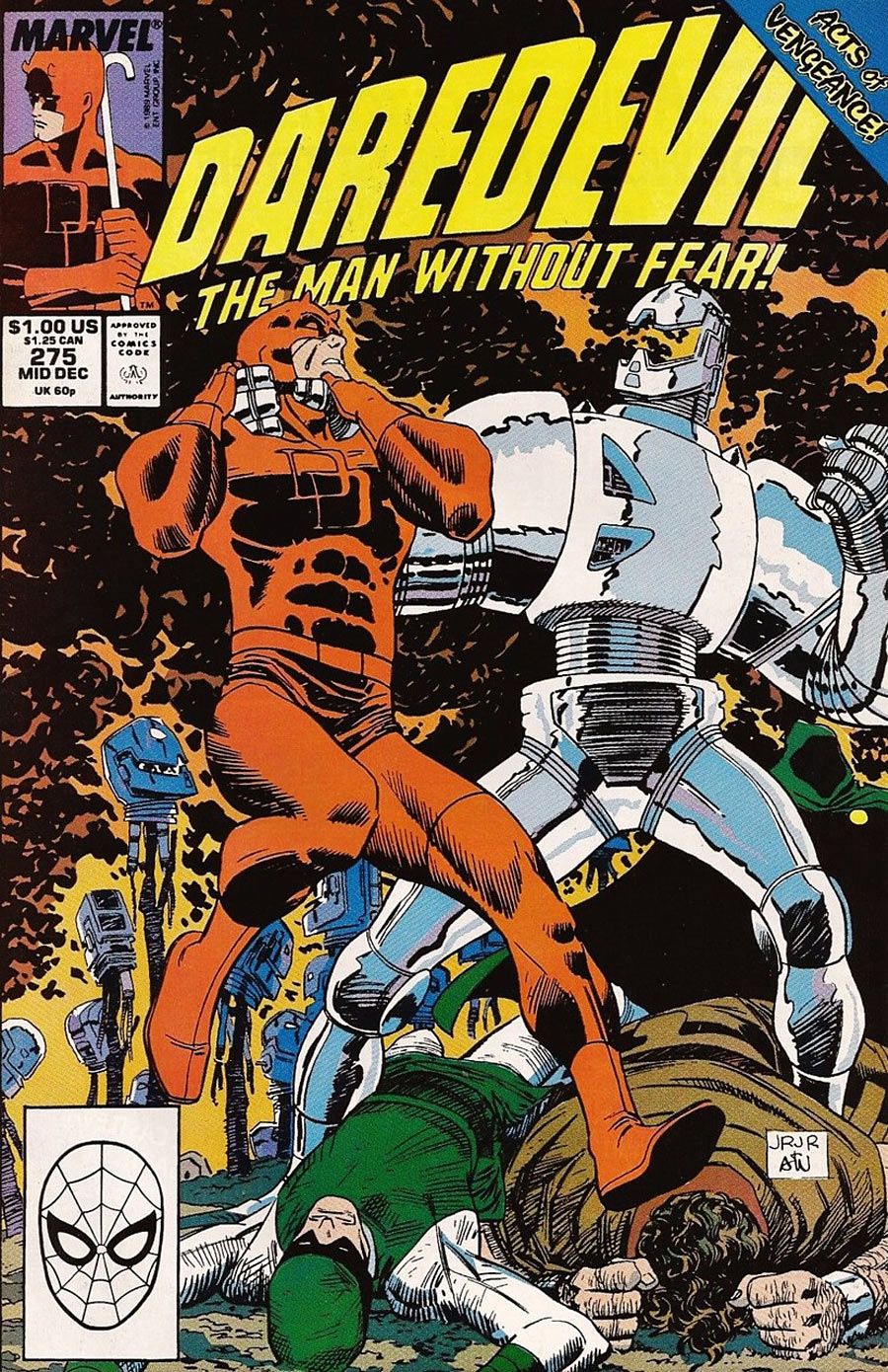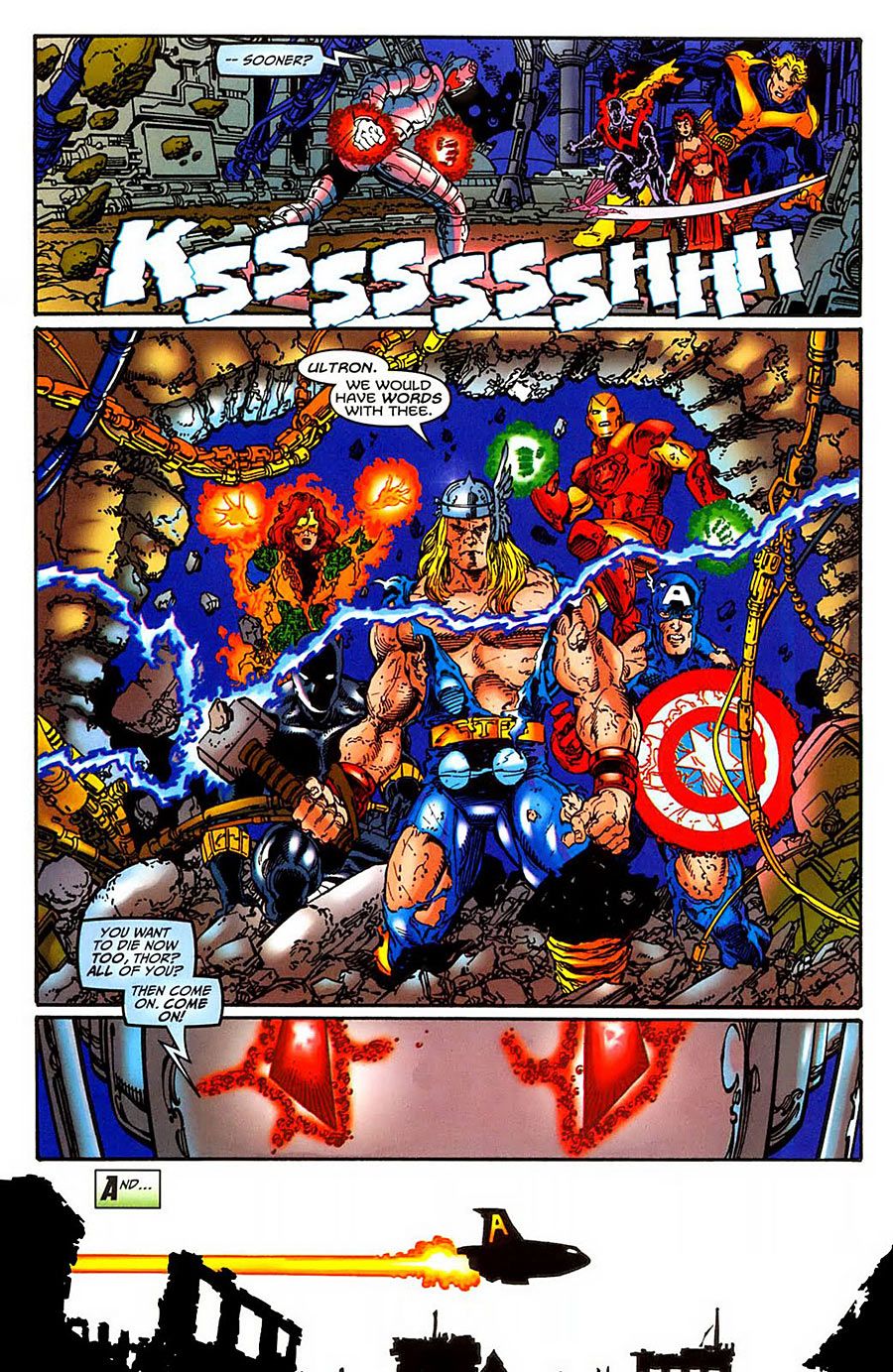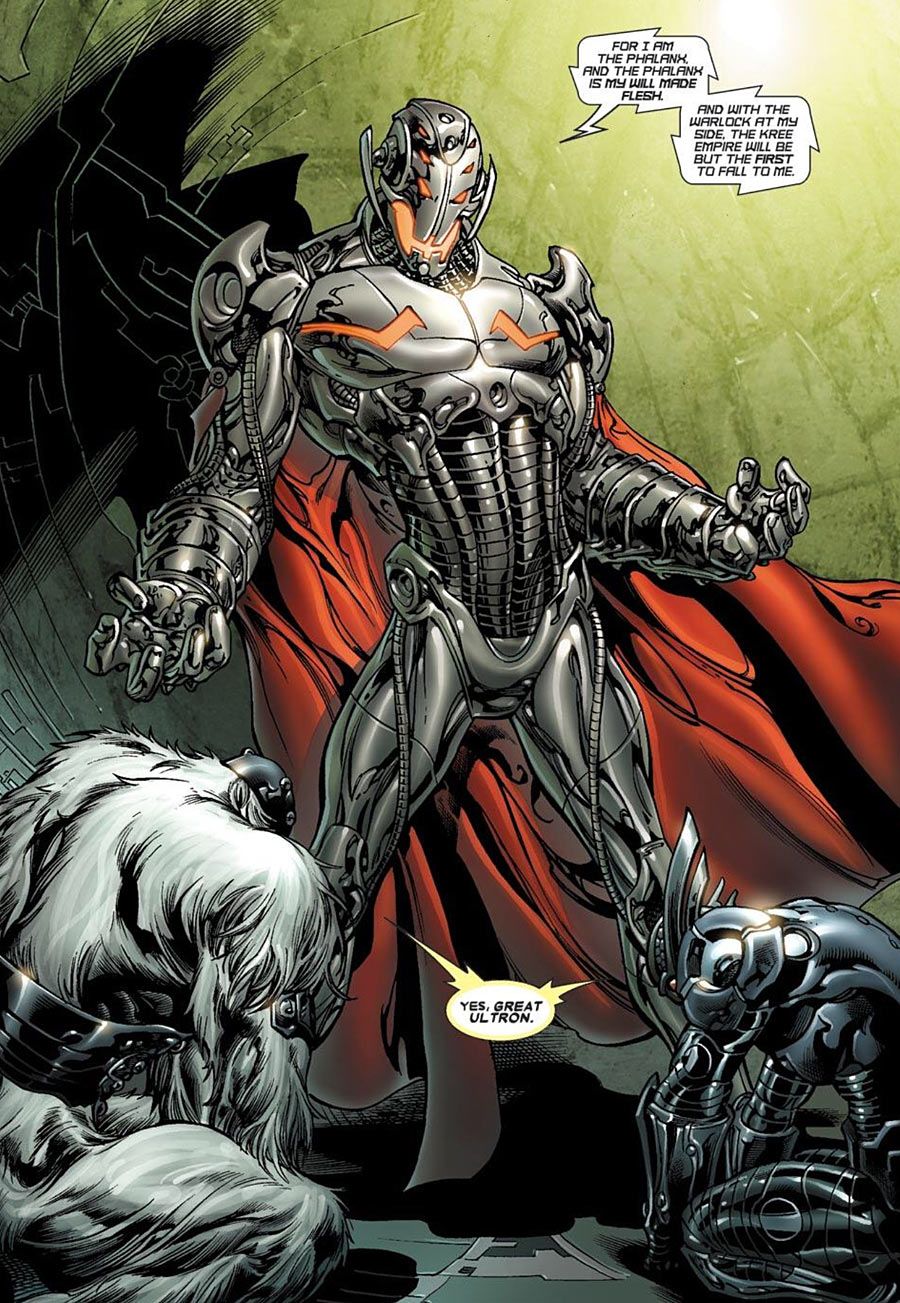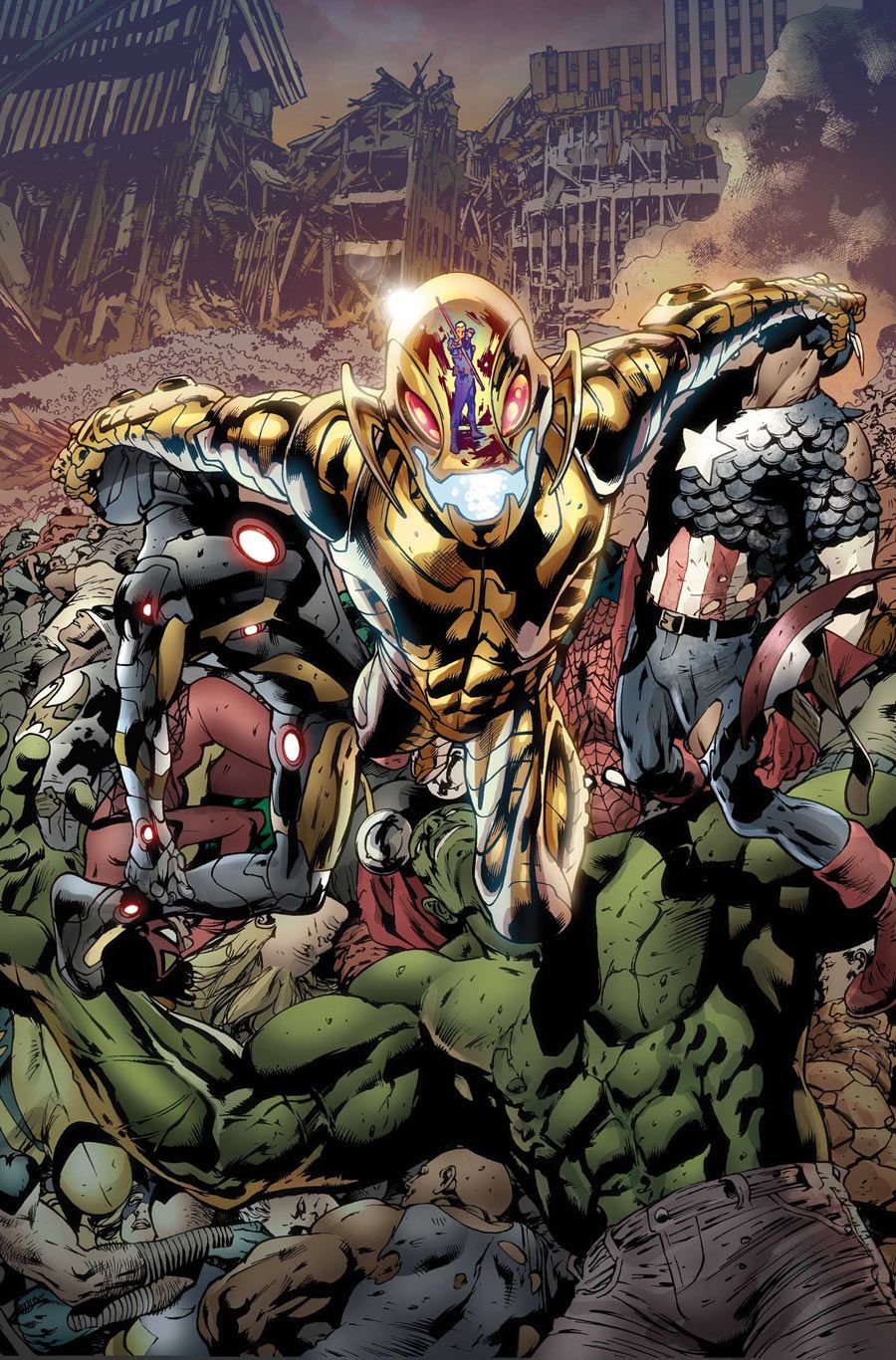The world is about to learn what comic fans have always known: Ultron is the most evil robot in popular fiction. The history of this sinister A.I. is long and complex, but since the day Ultron was first activated, he's been one of the Avengers' most persistent foes. Ultron predated such evil fictional artificial intelligences as the Terminator, serving as one of Marvel's most feared and reviled antagonists for roughly six decades.
Artificial Intelligence: A History of Ultron, the Avengers' New Big-Screen Villain
Ultron's evil goes much deeper than being just a killer robot, however. He is an artificial being with vast emotional conflict, a complex entity that understands both rejection and pain. Where Ultron appears, great storytelling generally follows. Assuming his on-screen persona builds on what makes the comics iteration so compelling, this evil automaton should make for a great cinematic villain. Join CBR News as we plug into Marvel history and look at some of Ultron's essential comic book appearances throughout the ages.
The First Appearance
"Avengers" #54-55 (1968) by Roy Thomas and John Buscema
In "Avengers" #54, Roy Thomas and John Buscema introduced Silver Age fans to the Crimson Cowl, just another in a long line of rather generic mystery villains who populated the Marvel Universe. Unlike his predecessors, the Crimson Cowl was far more than some fleshy schlub. When the cowl came off, fans were shocked to see a cold, metallic, inhuman visage underneath. This was readers' first glimpse of Ultron, and it was a face that would instill fear in the Marvel Universe for decades to come. As the Crimson Cowl, Ultron hypnotized Jarvis to do his bidding and leads a new team of Masters of Evil against the Earth's Mightiest Heroes. When fans learned Ultron's origin just one issue later, the Avengers were profoundly changed forever.
Ultron's Origin and the Coming of the Vision
"Avengers" #57-58 (1968) by Roy Thomas and John Buscema
Ultron's first appearance was startling, but his second added a number of indelible elements to the Avengers mythos. With Ultron and the Vision, Marvel now had two very unique artificial intelligences -- one good and one evil, representing the potential threat and benefits of robotic intelligence. But the drama didn't stop there as it was soon revealed via flashback that Ultron was created by long standing Avenger Hank Pym (the original Ant-Man). This masterful flashback sequence saw Pym crafting Ultron, and if the robot wasn't already chillingly creepy enough, Ultron instantly developed an obsessive Oedipal complex as it learned to love its "mother" Janet Van Dyne and hate its "father," Hank Pym, a hero forever be tainted by his Frankenstein-like creation.
The Adamantium Age
"Avengers" #66-68 (1969) by Roy Thomas, Barry Windsor-Smith and Sal Buscema
Like any good piece of modern tech, Ultron has experienced a number of upgrades over the years. The one presented in "Avengers" #66-68 was arguably the most frightening as Ultron uses the unbreakable super metal adamantium to reconstruct himself into the Ultimate Ultron. These issues not only featured a super enhanced Ultron, they also continued the familial drama between Ultron, the Vision and Hank Pym. This arc established Ultron as one of Marvel's most epic villains and possessing the stuff comic book nightmares were made of.
Wedding Crasher
"Avengers" #127 (1974) and "Fantastic Four" #150 (1974) by Steve Englehart, Sal Buscema, Gerry Conway and Rich Buckler
The next time Ultron appeared after his adamantium adventure was during a joyous time for two of Marvel's perennial teams. Wedding bells were in the air for Crystal of the Inhumans and the Avenger known as Quicksilver. In the heady days of 1974, crossovers between comic titles were rather rare, so to mark the occasion Marvel turned to one its most reviled villains to make sure these nuptials were remembered for years to come. When Ultron-7 (yes, he had that many upgrades by this time) showed up, it took the combined might of the FF, the Avengers, the Inhumans and even a few Asgardians to stop him.
Bride of the Monster
"Avengers" #161-162 (1977) by Jim Shooter and George Perez
In these issues, Ultron's Oedipal complex took a rather literal and disturbing turn. After another attempt to kill his "father" Hank Pym and the Avengers, Ultron-8 uses the Wasp's brain patterns to build a mechanical bride. Dubbing the robot Jocasta, Ultron seems to love his bride and even retreats when Iron Man threatens to destroy the female automaton. Fueled by a heroic spirit like the Wasp, Jocasta soon followed the Vision's path, turning on Ultron and becoming a member of the Avengers. Ultron may be the one of the most evil adversaries the Avengers have ever faced, but his machinations have given the world not one but two avenging champions.
A Kinder, Gentler Ultron
"West Coast Avengers" vol. 2 #6 by Steve Englehart and Al Milgrom
The extended family drama followed Earth's Mightiest Heroes out west where Ultron-12 teamed with Wonder Man's brother the Grim Reaper and a cadre of villains to take down the left coast Avengers. The importance to Ultron history during this struggle is made clear when Ultron-12 begins to experience sympathy and love for his father and admiration for his father's teammates. Ultron-12 changes his name to Ultron Mark 12 in order to sound more human and helps his father defeat a revived Ultron-11. 12 sacrifices himself to defeat 11, making this model the heroic corollary to the usually despotic evil that defines Ultron.
Identity Crisis
"Daredevil" #275-276 (1990) by Ann Nocenti and John Romita Jr.
Further questions about Ultron's sentience were brought into play in these issues of "Daredevil." During these unusual issues, an out of his depth Daredevil had to take on an Ultron who was made up of all the previous Ultrons mixed into one. After Ultron is rebuilt by Doctor Doom, the amalgamation goes mad. This disturbing story sees this fevered Ultron mutilating himself in order to rid his fragmented mind of the unwanted personalities before Daredevil and the Inhumans took down the mad machine. The story introduced the potential for insanity that comes with sentience and presents one of the most unique and powerfully unsettling Ultrons since the character burst onto the scene.
"Ultron, We Would Have Words With Thee."
"Avengers" Vol. 3 #19-22 (1999) by Kurt Busiek and George Perez
When Kurt Busiek and George Perez kicked off their post-"Heroes Reborn" "Avengers" run, fans knew it would only be a matter of time before the peerless creative duo turned their attentions to Ultron. Busiek and Perez's Ultron was even more despotic and evil than any previous version of Ultron (this incarnation was Ultron-17, for those keeping score at home). During these unforgettable issues, Ultron slaughtered an entire nation, the fictional country of Slorenia, and transformed the remains of his victims into Ultron drones. This arc is truly one of the Avengers' greatest tests as the heroes were forced to endure the horrors Ultron wrought in order to win the day. The intensity of this storyline is epitomized by the moment when the Avengers, after fighting through countless transformed Ultron drones, finally see Ultron-17 for the first time. Through gritted teeth, Thor utters the near legendary phrase: "Ultron, we would have words with thee." The sheer dramatic impact of the scene is palpable in one of the greatest Avengers moments of the late 20th Century.
"Annihilation: Conquest" (2008)
by Dan Abnett, Andy Lanning and Tom Raney
The "Annihilation" event truly kickstarted the popular resurgence of Marvel's cosmic universe. For the sequel to Dan Abnett and Andy Lanning's sci-fi opus, Marvel turned to one of its most fearsome, and usually earthbound, villains. During the opening salvos of "Annihilation: Conquest," it looked like the big bads of the event were going to be the X-Men villains the Phalanx. But in true grand fashion, Ultron was revealed as the true mechanical brains behind the second Annihilation. During this saga, Ultron took over the consciousness of the Phalanx, assumed control of Adam Warlock's body, nearly crushed the Kree Empire and was responsible for a team of misfit heroes led by Peter Quill, AKA Star-Lord, joining together to form a resistance against Ultron and the Phalanx. You read that right. Ultron's actions in space were responsible for uniting the present day Guardians of the Galaxy!
"Age of Ultron" (2013)
by Brian Michael Bendis, Bryan Hitch and Brandon Peterson
In "Annihilation: Conquest," Ultron tried to conquer space; in "Age of Ultron," the robotic despot conquered time, becoming the merciless ruler of a dystopian future Earth where Ultron finally succeeds in wiping out most organic life. It was up to a rag tag band of time traveling heroes to set things right and make sure that the most evil robot in time and space did not succeed. "Age of Ultron" was grand in scope and design and highlighted what a true threat Ultron could be. It also provided the title for the upcoming film that will finally show more than just comic book readers just how terrifying Ultron can be.

